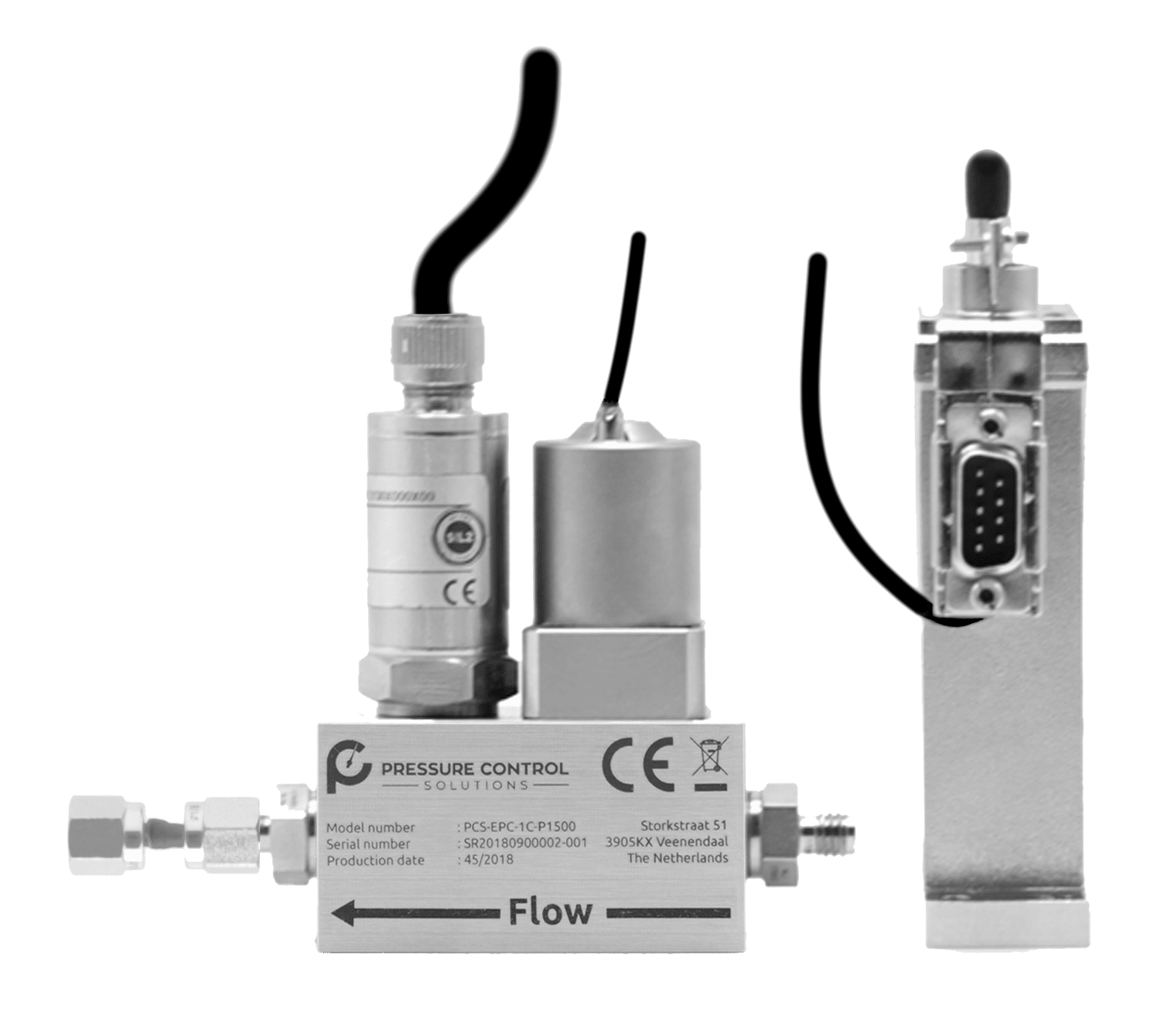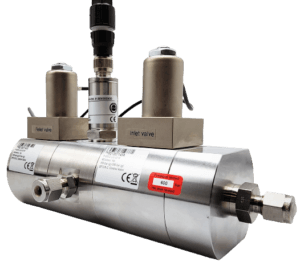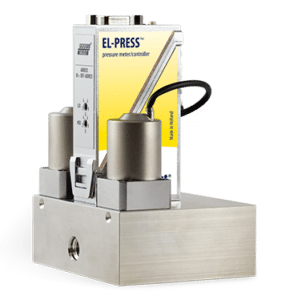FAQ: Single Valve versus Dual Valve controllers

Pressure transmitter
Flow restrictor
Flow body/manifold
PID Controller
Integrated proportional valve
Single Valve Electronic Reference Controller
Precision process control by PCS
The portfolio of Pressure Control Solutions is full of Expertise in Precision Process Control and High Precision Control Products.
What is perhaps the most unique in our portfolio, is the range of Electronic Reference Controllers that we offer. More than anything, we are focused on this particular niche in the world of process engineering and precision instrumentation. With that focus we have supplied and custom-engineered a range of solutions for automated process control since the start of PCS in 2016. Those precision control solutions that we develop, are either Single Valve or Dual Valve.
Single valve controllers consist of a single proportional valve, a pressure sensor, a PID controller, and a flow restrictor. The PID controller actuates a proportional valve to fill (or drain) a volume. With the proportional valve placed upstream and a flow restrictor placed downstream, actuating the valve will cause the pressure to build up. The proportional valve is sized in such a way that it overwhelms the capacity of the flow restrictor resulting in an increasing pressure when opening.
Dual valve controllers consist of a flow-body, 2 proportional valves, and a calibrated pressure sensor that is connected to a PID controller. The PID controller actuates one of the two proportional valves that is integrated with the flow-body. The upstream valve opens to increase pressure at the reference, whereas the downstream valve opens to decrease pressure. In a stable situation, both valves will close. Therefore, there is no consumption of reference gas in steady-state.
- The number of valves used is the most obvious difference:
1 proportional valve for a Single Valve controller, 2 proportional valves for a Dual Valve controller - Use of a bleed: A Single Valve controller uses a bleed to control and a Dual Valve Controller does not
- Consumption of reference gas: The Single Valve Controller requires a continuous consumption of reference gas, whereas the Dual Valve controller does not
- Accuracy
- Response time
The advantage of a single valve controller is that the valve is always “in control”, which results in the best possible control stability. However, this also means that the single valve is constantly opened, which increases the consumption of reference gas compared to applications using dual valve controllers. And although PCS has developed sophisticated product features to minimize this consumption, these aspects may slightly impact the response time of the single valve controller.
The benefit of a dual valve controller is that they increase and decrease the pressure equally fast by opening its upstream or downstream valve. Most dual valve pressure controllers have a certain bandwidth in which both valves are closed. This bandwidth is typically 0,1% of the full scale, but can sometimes be reduced to a value close to zero.
- When ultra-stable control is more important in your process than gas consumption, then your best choice is a Single Valve Controller.
- When ultra-fast responses are most important in your application, then you may prefer one of the Dual Valve controllers that PCS has to offer.






